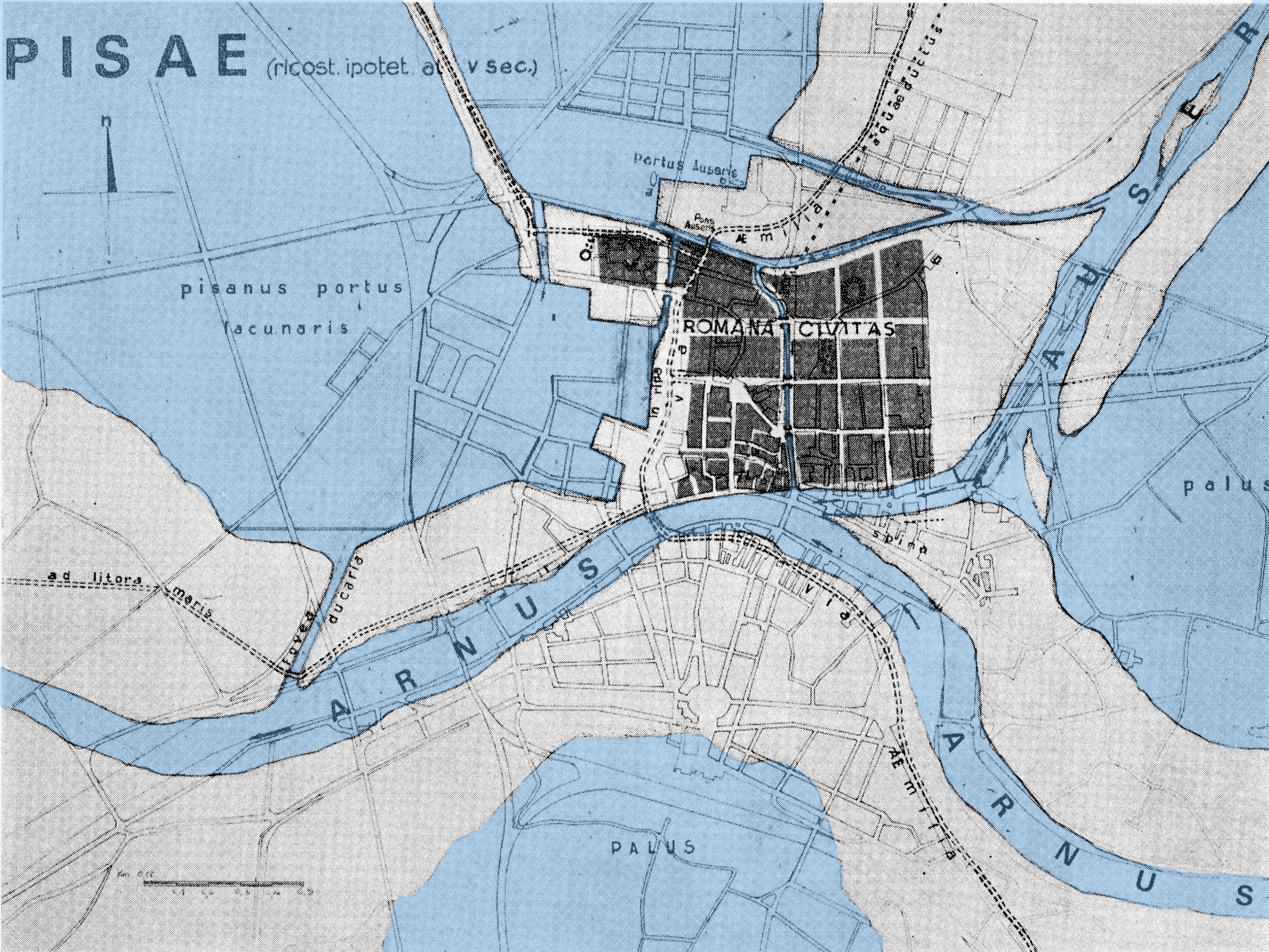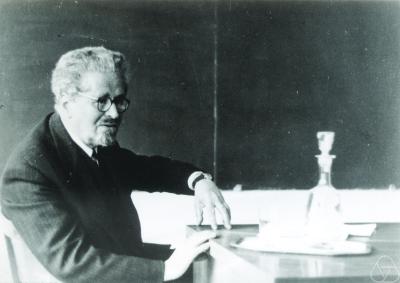|
Ulisse Dini
Ulisse Dini (14 November 1845 – 28 October 1918) was an Italian mathematician and politician, born in Pisa. He is known for his contributions to real analysis, partly collected in his book "''Fondamenti per la teorica delle funzioni di variabili reali''". Life and academic career Dini attended the Scuola Normale Superiore in order to become a teacher. One of his professors was Enrico Betti. In 1865, a scholarship enabled him to visit Paris, where he studied under Charles Hermite as well as Joseph Bertrand, and published several papers. In 1866, he was appointed to the University of Pisa, where he taught algebra and geodesy. In 1871, he succeeded Betti as professor for Mathematical analysis, analysis and geometry. From 1888 until 1890, Dini was ''rettore'' of the Pisa University, and of the ''Scuola Normale Superiore'' from 1908 until his death in 1918. He was also active as a politician: in 1871 he was voted into the Pisa city council and in 1880 became a member of the Parlia ... [...More Info...] [...Related Items...] OR: [Wikipedia] [Google] [Baidu] |
Pisa
Pisa ( ; ) is a city and ''comune'' (municipality) in Tuscany, Central Italy, straddling the Arno just before it empties into the Ligurian Sea. It is the capital city of the Province of Pisa. Although Pisa is known worldwide for the Leaning Tower of Pisa, the city contains more than twenty other historic churches, several medieval palaces, and bridges across the Arno. Much of the city's architecture was financed from its history as one of the Italian maritime republics. The city is also home to the University of Pisa, which has a history going back to the 12th century, the Scuola Normale Superiore di Pisa, founded by Napoleon in 1810, and its offshoot, the Sant'Anna School of Advanced Studies.Scuola Superiore Sant'Anna di Pisa Information statistics History ...
|
Geodesy
Geodesy or geodetics is the science of measuring and representing the Figure of the Earth, geometry, Gravity of Earth, gravity, and Earth's rotation, spatial orientation of the Earth in Relative change, temporally varying Three-dimensional space, 3D. It is called planetary geodesy when studying other astronomical body, astronomical bodies, such as planets or Natural satellite, circumplanetary systems. Geodynamics, Geodynamical phenomena, including crust (geology), crustal motion, tides, and polar motion, can be studied by designing global and national Geodetic control network, control networks, applying space geodesy and terrestrial geodetic techniques, and relying on Geodetic datum, datums and coordinate systems. Geodetic job titles include geodesist and geodetic surveyor. History Geodesy began in pre-scientific Classical antiquity, antiquity, so the very word geodesy comes from the Ancient Greek word or ''geodaisia'' (literally, "division of Earth"). Early ideas about t ... [...More Info...] [...Related Items...] OR: [Wikipedia] [Google] [Baidu] |
Potential Theory
In mathematics and mathematical physics, potential theory is the study of harmonic functions. The term "potential theory" was coined in 19th-century physics when it was realized that the two fundamental forces of nature known at the time, namely gravity and the electrostatic force, could be modeled using functions called the gravitational potential and electrostatic potential, both of which satisfy Poisson's equation—or in the vacuum, Laplace's equation. There is considerable overlap between potential theory and the theory of Poisson's equation to the extent that it is impossible to draw a distinction between these two fields. The difference is more one of emphasis than subject matter and rests on the following distinction: potential theory focuses on the properties of the functions as opposed to the properties of the equation. For example, a result about the Mathematical singularity, singularities of harmonic functions would be said to belong to potential theory whilst a result ... [...More Info...] [...Related Items...] OR: [Wikipedia] [Google] [Baidu] |
Fourier Series
A Fourier series () is an Series expansion, expansion of a periodic function into a sum of trigonometric functions. The Fourier series is an example of a trigonometric series. By expressing a function as a sum of sines and cosines, many problems involving the function become easier to analyze because trigonometric functions are well understood. For example, Fourier series were first used by Joseph Fourier to find solutions to the heat equation. This application is possible because the derivatives of trigonometric functions fall into simple patterns. Fourier series cannot be used to approximate arbitrary functions, because most functions have infinitely many terms in their Fourier series, and the series do not always Convergent series, converge. Well-behaved functions, for example Smoothness, smooth functions, have Fourier series that converge to the original function. The coefficients of the Fourier series are determined by integrals of the function multiplied by trigonometric func ... [...More Info...] [...Related Items...] OR: [Wikipedia] [Google] [Baidu] |
Convergence (mathematics)
In mathematics, a series (mathematics), series is the summation, sum of the terms of an infinite sequence of numbers. More precisely, an infinite sequence (a_1, a_2, a_3, \ldots) defines a series (mathematics), series that is denoted :S=a_1 + a_2 + a_3 + \cdots=\sum_^\infty a_k. The th partial sum is the sum of the first terms of the sequence; that is, :S_n = a_1 +a_2 + \cdots + a_n = \sum_^n a_k. A series is convergent (or converges) if and only if the sequence (S_1, S_2, S_3, \dots) of its partial sums tends to a limit of a sequence, limit; that means that, when adding one a_k after the other ''in the order given by the indices'', one gets partial sums that become closer and closer to a given number. More precisely, a series converges, if and only if there exists a number \ell such that for every arbitrarily small positive number \varepsilon, there is a (sufficiently large) integer N such that for all n \ge N, :\left , S_n - \ell \right , 1 produce a convergent series: ... [...More Info...] [...Related Items...] OR: [Wikipedia] [Google] [Baidu] |
Francesco Severi
Francesco Severi (13 April 1879 – 8 December 1961) was an Italian mathematician. He was the chair of the committee on Fields Medal in 1936, at the first delivery. Severi was born in Arezzo, Italy. He is famous for his contributions to algebraic geometry and the theory of functions of several complex variables. He became the effective leader of the Italian school of algebraic geometry. Together with Federigo Enriques, he won the '' Bordin prize'' from the French Academy of Sciences. He contributed in a major way to birational geometry, the theory of algebraic surfaces, in particular of the curves lying on them, the theory of moduli spaces and the theory of functions of several complex variables. He wrote prolifically, and some of his work (following the intuition-led approach of Federigo Enriques) has subsequently been shown to be not rigorous according to the then new standards set in particular by Oscar Zariski and André Weil. Although many of his arguments have si ... [...More Info...] [...Related Items...] OR: [Wikipedia] [Google] [Baidu] |
Operation (mathematics)
In mathematics, an operation is a function from a set to itself. For example, an operation on real numbers will take in real numbers and return a real number. An operation can take zero or more input values (also called "'' operands''" or "arguments") to a well-defined output value. The number of operands is the arity of the operation. The most commonly studied operations are binary operations (i.e., operations of arity 2), such as addition and multiplication, and unary operations (i.e., operations of arity 1), such as additive inverse and multiplicative inverse. An operation of arity zero, or nullary operation, is a constant. The mixed product is an example of an operation of arity 3, also called ternary operation. Generally, the arity is taken to be finite. However, infinitary operations are sometimes considered, in which case the "usual" operations of finite arity are called finitary operations. A partial operation is defined similarly to an operatio ... [...More Info...] [...Related Items...] OR: [Wikipedia] [Google] [Baidu] |
Calculus
Calculus is the mathematics, mathematical study of continuous change, in the same way that geometry is the study of shape, and algebra is the study of generalizations of arithmetic operations. Originally called infinitesimal calculus or "the calculus of infinitesimals", it has two major branches, differential calculus and integral calculus. The former concerns instantaneous Rate of change (mathematics), rates of change, and the slopes of curves, while the latter concerns accumulation of quantities, and areas under or between curves. These two branches are related to each other by the fundamental theorem of calculus. They make use of the fundamental notions of convergence (mathematics), convergence of infinite sequences and Series (mathematics), infinite series to a well-defined limit (mathematics), limit. It is the "mathematical backbone" for dealing with problems where variables change with time or another reference variable. Infinitesimal calculus was formulated separately ... [...More Info...] [...Related Items...] OR: [Wikipedia] [Google] [Baidu] |
Walter Burton Ford
Walter Burton Ford (May 18, 1874 in Oneonta, New York – February 24, 1971 in Seneca County, New York) was an American mathematician and philanthropist. Career The Great Comet of 1882 sparked his interest in mathematics. He graduated from Oneonta State Normal School (now SUNY Oneonta) in 1893, and then enrolled at Amherst College. After two years, he left Amherst and enrolled at Harvard University. From Harvard he received his A.B. degree ''magna cum laude'' in 1897 and an M.A. in 1898. After his Harvard graduate studies, he began his teaching career with one year at Albany Normal School (now SUNY Albany), and then a year at the Albany Academy. In 1900 he returned to Harvard to begin work on his doctorate. Harvard recommended Ford to the University of Michigan in their search for a new mathematics instructor, and he accepted the post. His duties "consisted of a heavy load of teaching freshmen only, and in classes so large that students were using radiators as well as chairs ... [...More Info...] [...Related Items...] OR: [Wikipedia] [Google] [Baidu] |
London Mathematical Society
The London Mathematical Society (LMS) is one of the United Kingdom's Learned society, learned societies for mathematics (the others being the Royal Statistical Society (RSS), the Institute of Mathematics and its Applications (IMA), the Edinburgh Mathematical Society and the Operational Research Society (ORS). History The Society was established on 16 January 1865, the first president being Augustus De Morgan. The earliest meetings were held in University College London, University College, but the Society soon moved into Burlington House, Piccadilly. The initial activities of the Society included talks and publication of a journal. The LMS was used as a model for the establishment of the American Mathematical Society in 1888. Mary Cartwright was the first woman to be President of the LMS (in 1961–62). The Society was granted a royal charter in 1965, a century after its foundation. In 1998 the Society moved from rooms in Burlington House into De Morgan House (named after t ... [...More Info...] [...Related Items...] OR: [Wikipedia] [Google] [Baidu] |
Parliament Of The Kingdom Of Italy
The Parliament of the Kingdom of Italy () was the bicameral parliament of the Kingdom of Italy. It was established in 1861 to replace the Parliament of the Kingdom of Sardinia and lasted until 18 June 1946, when it was replaced by the present-day Italian Parliament. It was formed of a lower house (the Chamber of Deputies (Kingdom of Italy), Chamber of Deputies or after 1939 the Chamber of Fasces and Corporations) and an upper house (Senate of the Kingdom of Italy, Senate of the Kingdom). Bibliography * Francesco Bartolotta (ed), ''Parlamenti e governi d'Italia dal 1848 al 1970'', Roma, Vito Bianco Ed., 1971. {{Italy-hist-stub category:1946 disestablishments in Italy category:Italian Parliament category:1861 establishments in Italy category:Defunct bicameral legislatures ... [...More Info...] [...Related Items...] OR: [Wikipedia] [Google] [Baidu] |



